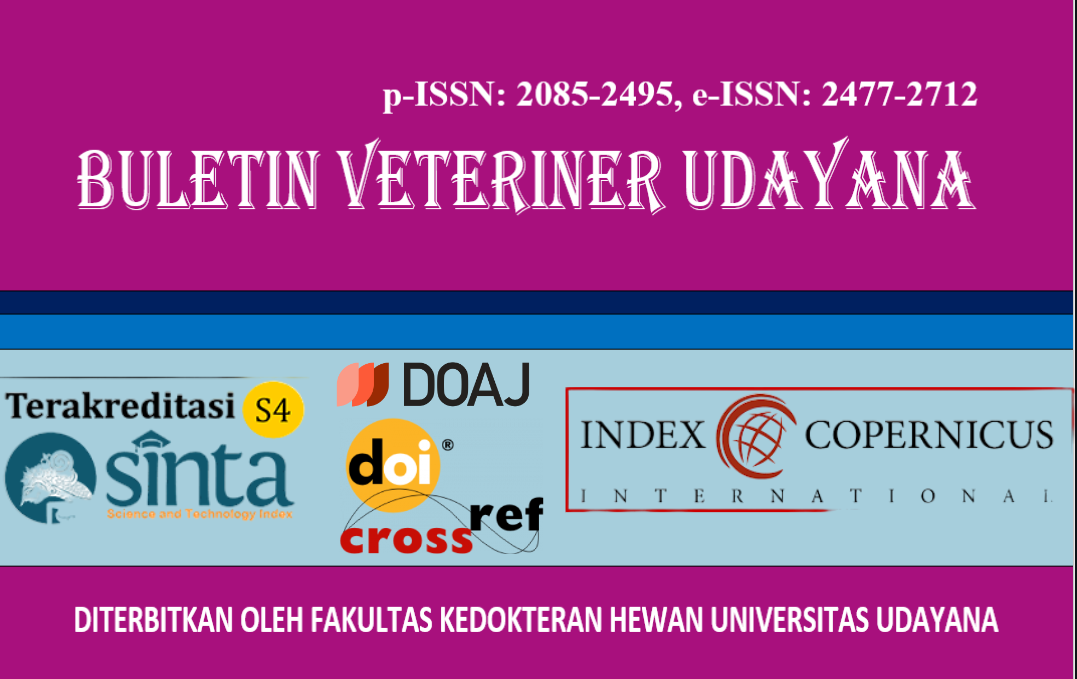ATROPHY OF THE BURSA FABRICIUS IN THE INCIDENCE OF MULTIPLE INFECTIONS BY AVIAN INFLUENZA AND NEWCASTLE DISEASE VIRUS IN FREE-RANGE CHICKEN
DOI:
https://doi.org/10.24843/bulvet.2024.v16.i04.p38Keywords:
Avian Influenza, native chickens, Newcastle DiseaseAbstract
Free-range chickens with traditional rearing systems are susceptible to be infected with AI and ND viruses, in fact, the two viruses that are deadly to poultry can occur simultaneously. This report aims to confirm the disease diagnosis and determine the cause of death of native chickens on one farm located in Sayan Village. The native chicken sample used for this case study came from a flock of chickens showing clinical symptoms such as anorexia, swelling around the eyes, and greenish-white diarrhea. There were 17 chickens showing symptoms of illness out of a total population of 30 chickens. Within 1 week, 9 chickens were found dead of out 17 chickens that exhibited illness. The rest of the chicken's condition did not improve after being treated, so it was decided to be taken one chicken to be euthanized and necropsied. Based on the lesion that was examined macroscopically and microscopically, the characteristic lesion led to AI and ND virus infection. Confirmation of the diagnosis of the possibility of AI and ND virus infection was carried out by the microtiter technique HA test and the rapid HI test obtained positive results. In the differential diagnosis examination of the lung and small intestine samples, as well as the feces, it showed that there was no secondary infection by E. coli bacteria or the parasite Eimeria spp. Based on these findings, it can be concluded that native chickens were infected with AI and ND viruses. Therefore, farmers are advised to separate sick and healthy native chickens, vaccinate the entire population and implement biosecurity.




